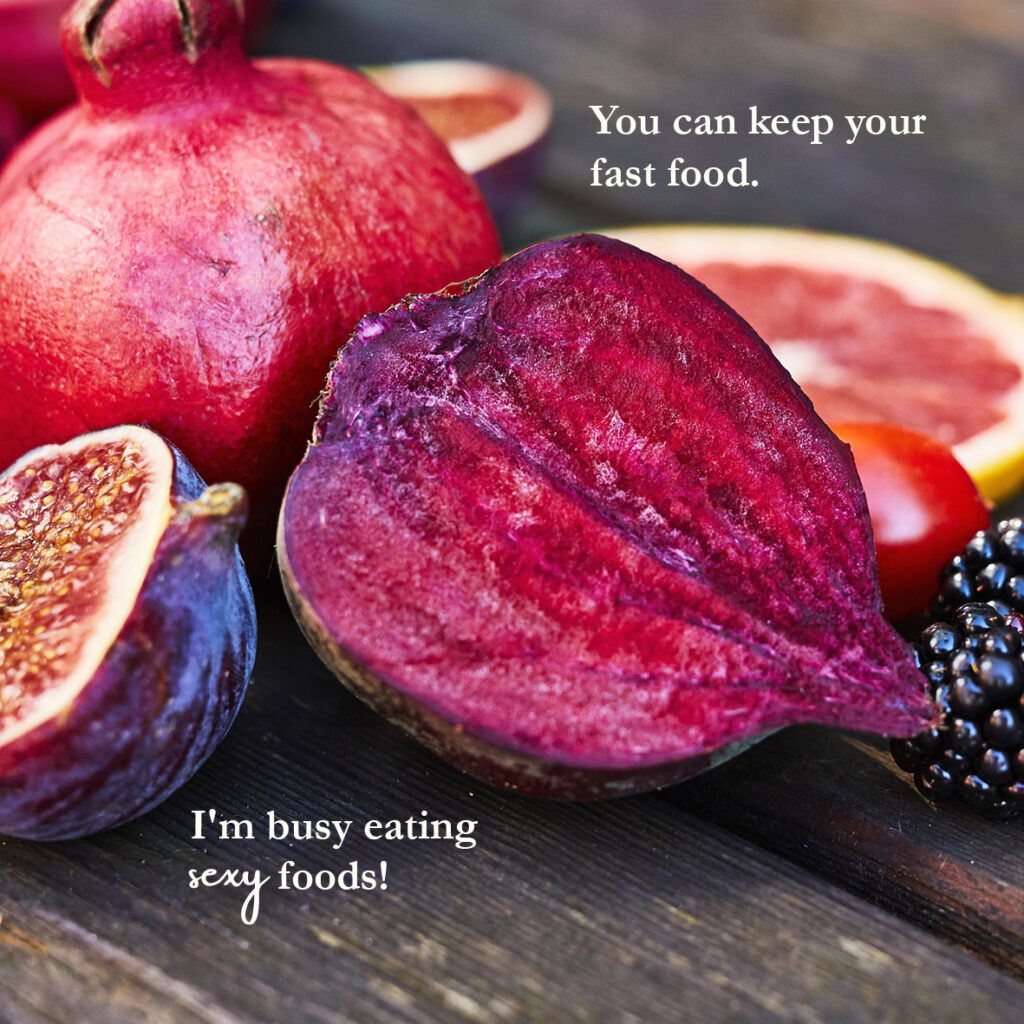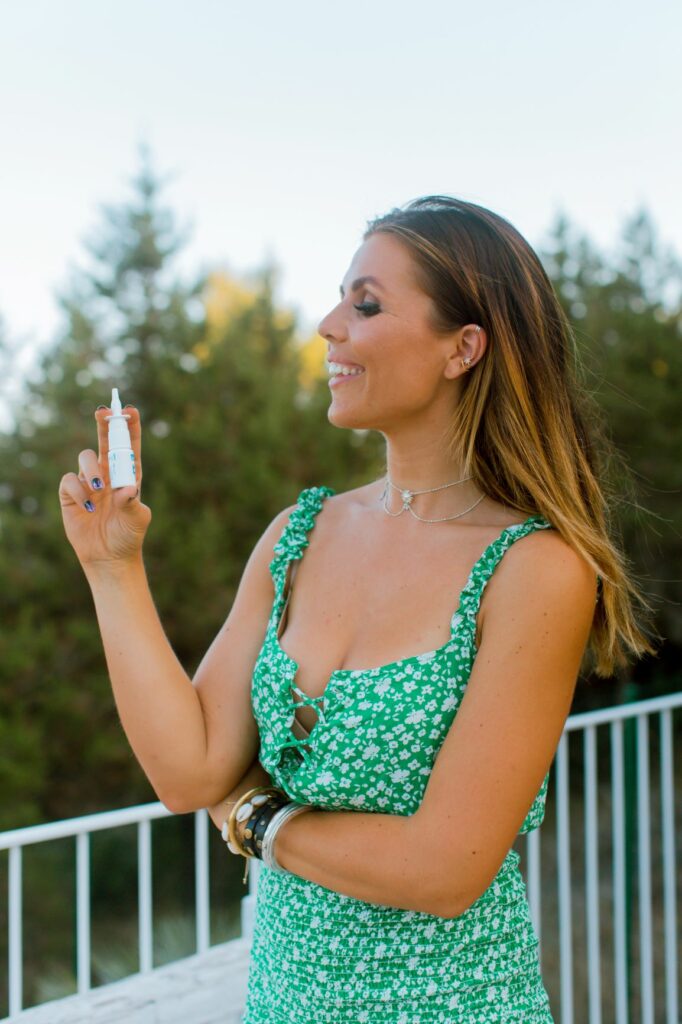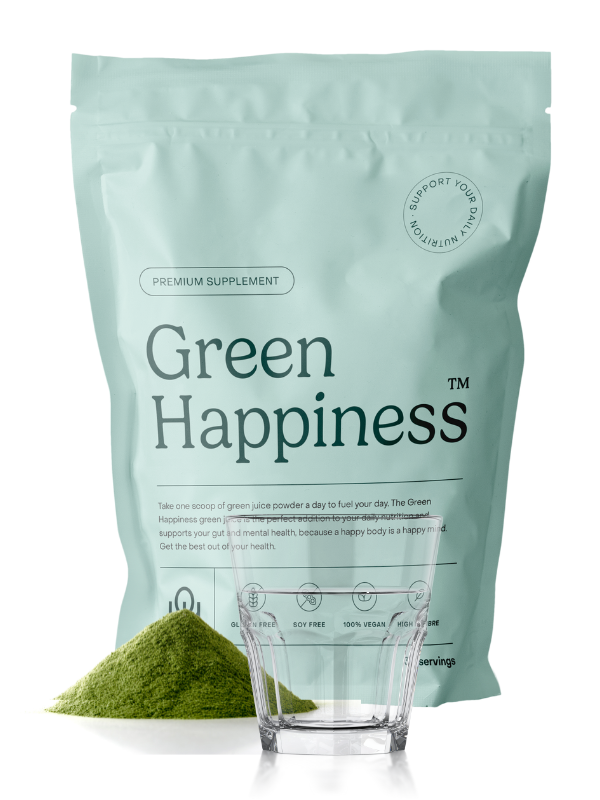
Even if you don’t eat (fully) plant-based, pay attention to this
Especially #4 is what all the questions are about!
We believe that vitamins and minerals should primarily come from your diet. Unfortunately, the soil on which our food is grown is not as fertile as it used to be, resulting in fewer nutrients in our food. Add to that our busy lives, exhaust fumes, chemical exposure from food, beauty products, and household items mean we need more. So, you understand that supplementation is often not an unnecessary luxury.
Here are the nutrients we ourselves are attentive to. Can you check their status in your body? From which foods do you get them, and if you need supplementation, what should you focus on? Here it comes:
Calcium
We need calcium, among other things, for strong bones! That’s why we drink a glass of milk every day, or do we? Think again.
- Studies laten zien dat in landen met een hoge zuivelinname botontkalking vaker voorkomt[1].
- Het seems that dairy consumption also leads to high secretion of calcium from the body and causes the body to need more minerals including potassium, magnesium, calcium, and therefore uses the reserves in our nails, hair, and bones.
- From dairy, our body can absorb about one-third of the calcium, while from plants is dit twee derde[2].
- Bij a plant-based diet, an intake of 500 mg of calcium per day should be sufficient moeten zijn om de botten sterk te houden[3] [4].
| Food source | Serving | Calcium in mg |
| Semi-skimmed milk | 150 ml | 184 mg |
| White beans, uncooked | 100 g | 80 mg |
| Tofu | 100 g | 188 mg |
| Almonds | 25 g | 71 mg |
| Tahini | 10 g | 43 mg |
| Broccoli | 100 g | 38 mg |
| Kale | 100 g | 180 mg |
| Chinese cabbage | 100 g | 125 mg |
| Teff flour | 100 g | 180 mg |
| Quinoa, uncooked | 100 g | 47 mg |
| Sweet potato, uncooked | 100 g | 24 mg |
| Orange | 1 piece | 23 mg |
Source:
Nutrition Center, Eat meter
Iron
- Is een belangrijk onderdeel van hemoglobine wat zuurstof rondpompt door het bloed.
- Vooral bij jonge vrouwen met hevige menstruatiebloedingen en bij kinderen is het belangrijk deze in de gaten te houden.
- Heem ijzer vind je terug in vlees, non-heem ijzer in plantaardige producten.
- Heem ijzer wordt beter opgenomen dan non-heem, maar je ziet niet vaker een tekort bij planteneters. Dit heeft waarschijnlijk te maken met de grote hoeveelheden groenten, peulvruchten, noten en volkoren granen die ze eten[5].
- Mannen hebben 9mg per dag nodig, vrouwen 15mg en voor planteneters is dit 1,8 keer hoger.
- Vitamine C helpt bij de opname van ijzer in het lichaam. [6] [7]
| Food source | Serving | Iron in mg |
| Raw spinach | 100 grams | 2 mg |
| Lamb’s lettuce, raw | 100 grams | 1.1 mg |
| Lentils, dried | 100 grams | 5 mg |
| Brown beans, dried | 100 grams | 5 mg |
| Apricots, dried | 20 grams | 0.8 mg |
| Cashew nuts | 25 grams | 1.7 mg |
| Tahini | 10 grams | 0.9 mg |
| Oatmeal, uncooked | 100 grams | 4 mg |
| Quinoa, uncooked | 100 grams | 4.6 mg |
| Dark chocolate | 25 grams | 0.8 mg |
Source:
Nutrition Center, Eat meter

Omega 3 fatty acids
- Vooral de verhouding tussen omega 3-. 6- en 9 is belangrijk.
- Omega 3 zijn de brandblussers, de vetzuren die ontstekingen remmen[8] [9].
- Het nadeel van vis als bron van vet zijn de zware metalen en plastics die je meekrijgt met het eten van vis.
- Duurzaamheid en dierenwelzijn daarbij nog niet eens meegenomen.
- Omega 6 krijgen we juist te veel binnen (via bewerkte voeding en plantaardige oliën).
- Wij kiezen naast onderstaande voedingsmiddelen dagelijks voor een algensupplement om onze vetzurenbalans gezond te houden.
| Food source | Serving | Omega 3 in mg |
| Flaxseed | 10 grams | 2281 mg |
| Chia seeds | 10 grams | 1755 mg |
| Hemp seeds | 10 grams | 393 mg |
| Spirulina | 1 teaspoon | 58 mg |
| Pumpkin, cooked | 100 grams | 338 mg |
| Spinach, cooked | 100 grams | 352 mg |
| Cauliflower, cooked | 100 grams | 208 mg |
| Blueberries | 100 grams | 174 mg |
| Mango | 1 piece | 77 mg |
| Melon | 100 grams | 58 mg |
| Wild rice, cooked | 100 grams | 156 mg |
Vitamin B12
Vitamin B12 is the subject of conversation when you switch to a (more) plant-based diet. Eating animal products (meat, fish, eggs, and dairy) is not a guarantee for a good vitamin B12 status. Therefore, it is not an unnecessary luxury to supplement it (a surplus is excreted by the body and has no adverse effects on the body) or to regularly test it. Supplementation is especially important and is recommended for those over 50 due to reduced absorption.
- Vitamine B12 wordt door bacteriën in de darmen en aardbodem geproduceerd. Vandaar dat wij het binnenkrijgen wanneer we dierlijke producten eten.
- De vitamine B12 status is afhankelijk van de omzetting en opname in het lichaam. O.a. de intrinsic factor in de maag en de mate van opneembaarheid via de darmwand spelen hierbij een grote rol[10].
- Via een bloedtest (via de huisarts of via bloedwaardentest.nl) kun je jouw status checken. Dan kun je ook zien of jouw eventuele suppletie het gewenste effect heeft! Met de code pronofit25 ontvang je 25 euro korting op een vitamine B12 bloedtest!
- Wij adviseren en gebruiken zelf de vitamine B12 neusspray. Via het goed doorbloedde neusslijmvlies neem je de B12 direct op in het bloed en vermijd je het maag-darmkanaal[11].

Sources:
- [1] World Health Organisation. Recommendations for preventing osteoporosis. http://www.who.int/dietphysicalactivity/publications/trs916/en/gsfao_osteo.pdf
- [2] JL Keller, A Lanou, ND Barnard. The consumer cost of calcium from food and supplements. J Am Diet Assoc 2002;102:1669-71.
- [3] P Appleby, A Roddam, N Allen, e.a. Comparative fracture risk in vegetarians and nonvegetarians in EPIC-Oxford. Eur J Clin Nutr. 2007 Dec;61(12):1400-6. Epub 2007 Feb 7.
- [4] CD Hunt and LK Johnson. Calcium requirements: new estimations for men and women by cross-sectional statistical analyses of calcium balance data from metabolic studies. Am J Clin Nutr October 2007. vol. 86 no. 4 1054-1063.
- [5] Haddad EH, Berk LS, Kettering JD, Hubbard RW, Peters WR. Dietary intake and biochemical, hematologic, and immune status of vegans compared with nonvegetarians. Am J Clin Nutr 1999;70(suppl):586S-93S.
- [6] Obeid R, Geisel J, Schorr H, et al. The impact of vegetarianism on some haematological parameters. Eur J Haematol. 2002;69:275-9.
- [7] Gleerup A, Rossander Hulthen L, Gramatkovski E, et al. Iron absorption from the whole diet: comparison of the effect of two different distributions of daily calcium intake. Am J Clin Nutr 1995;61:97-104.
- [8] E Lopez-Garcia, MB Schulze, JE Manson, e.a. Consumption of (n-3) Fatty Acids Is Related to Plasma Biomarkers of Inflammation and Endothelial Activation in Women. Journal of Nutrition 134, no.7 (2004):1806-11.
- [9] L Hooper, RL Thompson, RA Harrison, e.a. Risks and Benefits of Omega 3 Fats for Mortality, Cardiovascular Disease, and Cancer: Systematic Review. BMJ 332, no. 7544 (2006):752-60.
- [10] World Health Organisation. Vitamin and mineral requirements in human nutrition. Second Edition. 2004. http://apps.who.int/iris/bitstream/10665/42716/1/9241546123.pdf?ua=1
- [11] Physicochemical and physiological considerations for efficient nore-to-brain targeting. S Bahadur, K Pathak. Expert Opinion on Drug Delivery, 9:1, 19-31. Hrrps://doi.org/10.1517/17425247.2012.636801.
